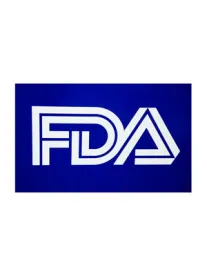The U.S. Food and Drug Administration (FDA) recently issued a final guidance titled “Use of Real-World Evidence to Support Regulatory Decision-Making for Medical Devices.” In the guidance, the FDA recognizes that under the right conditions, real world evidence (RWE) may be suitable to support the clearance or approval of a new device, or the expansion of the indications for use of devices that are already on the market. Additionally, aggregation of real world data (RWD) (e.g., in medical device registries) may prove useful as a post-market control suitable for providing ongoing device safety surveillance and additional evidence for effectiveness.
The guidance defines RWD as data relating to patient health status and/or the delivery of health care routinely collected from a variety of sources. Cited examples of RWD include data derived from electronic health records (EHRs), claims and billing data, data from product and disease registries, patient-generated data including in home-use settings, and data gathered from other sources that can inform on health status, such as mobile devices. The guidance provides that RWD sources can be used as data collection and analysis infrastructure to support many types of trial designs, including, but not limited to, randomized trials, such as large simple trials, pragmatic clinical trials, and observational studies (prospective and/or retrospective ).
The guidance defines RWE as the clinical evidence regarding the usage, and potential benefits or risks, of a medical product derived from analysis of RWD.
RWD may be used for several purposes, including the following:
-
for generating hypotheses to be tested in a prospective clinical study;
-
as a historical control, a prior in a Bayesian trial
-
or as one source of data in a hierarchical model or a hybrid data synthesis;
-
as a concurrent control group or as a mechanism for collecting data related to a clinical study to support device approval or clearance in a setting where a registry or some other systematic data collection mechanism exists;
-
as evidence to identify, demonstrate, or support the clinical validity of a biomarker;
-
as evidence to support approval or granting of an Humanitarian Device Exemption, Premarket Approval Application (PMA), or De Novo request;
-
as support for a petition for reclassification of a medical device under section 513(e) or (f)(3) of the FD&C Act;
-
as evidence for expanding the labeling of a device to include additional indications for use or to update the labeling to include new information on safety and effectiveness
-
for public health surveillance efforts. Through ongoing surveillance, signals are at times identified that suggest there may be a safety issue with a medical device. RWE may be used to refine these signals for purposes of informing appropriate corrective actions and communication;
-
to conduct post-approval studies that are imposed as a condition of device approval or to potentially preclude the need for postmarket surveillance studies ordered under section 522 of the FD&C Act
The guidance also includes a section on the applicability of IDE requirements to the collection of RWD. Briefly, the guidance states that “if the device is being used in the normal course of medical practice, an IDE would likely not be required,” but “if data are being gathered to determine the safety and effectiveness of the device, and the process for gathering the data would influence treatment decisions, such administration would likely not be within the normal course of medical practice, and an IDE may be required.”
The guidance discusses characteristics of RWD, including relevance and reliability, and examples where RWD is used, including expanded indications for use, postmarket surveillance studies, post-approval device surveillance as a condition of approval, control groups, supplementary data, and objective performance criteria and performance goals.
The guidance notes that the FDA has issued plans for, and has begun implementation of, the National Evaluation System for health Technology (NEST) to leverage RWD to more quickly identify safety problems and to better understand the benefit-risk profile of devices used in clinical care. The FDA says it believes that, if leveraged correctly, the NEST may also help to reduce the time and cost of generating the types of evidence used to support the marketing authorization of FDA-regulated products and to meet postmarket study and reporting requirements.




 />i
/>i
